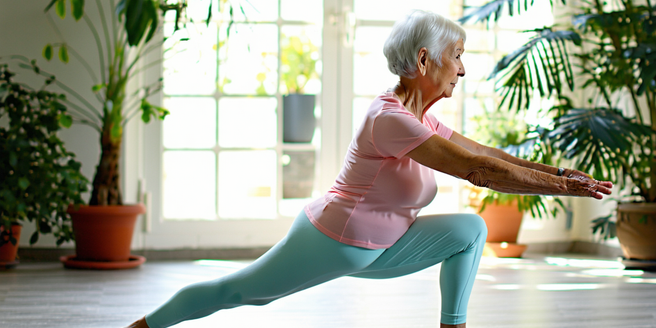
Understanding the Importance of Balance
| Benefits | Helps prevent falls | Improves coordination |
| Aging | Vital for aging population | Reduces injury risk |
| Performance | Enhances sports performance | Increases strength |
| Mental | Boosts mental clarity | Improves focus |
| Stability | Enhances postural stability | Strengthens core |
| Rehabilitation | Aids recovery in rehab | Essential for healing |
Basic Balance Techniques for Beginners
Beginning your journey into balance exercises can be both rewarding and fun. Start by integrating simple exercises such as standing on one leg for a few seconds at a time. This foundational posture strengthens your core muscles and provides a solid base from which to improve. As you gain confidence, incorporate subtle movements like gently rotating your ankles or shifting your weight from heel to toe. These activities encourage body awareness and muscle coordination. Another excellent technique for novices is the heel-toe walk. With arms extended to the sides for balance, placing one foot directly in front of the other encourages stability. Aim to perform these movements for short intervals and gradually increase the duration as your balance improves. Practicing consistently, preferably daily, will ensure a steady progression and will set a strong foundation for more advanced techniques. Above all, patience and persistence are key in mastering balance.
Intermediate Levels: Progressing Your Skills
As you progress from beginner to intermediate, the complexity and intensity of balance exercises naturally increase. At this stage, introducing elements such as Bosu balls or balance boards becomes beneficial. These tools add instability, forcing your body to adjust and strengthen in response, enhancing both your equilibrium and coordination. It’s advisable to practice exercises like single-leg squats on these surfaces, which challenge your balance significantly while building strength in your legs and core. Participating in yoga or pilates classes can also be particularly beneficial as these disciplines heavily emphasize posture and controlled movements. When engaging in intermediate balance training, incorporating multidirectional movements, such as side lunges or twisting motions, can further refine your stability. Also, remember to regularly review your technique to ensure that you are targeting the intended muscle groups safely and effectively. Consistent practice at this level paves the way for more advanced balance challenges.
Advanced Libra Balance Workouts
For those prepared to take their balance training to the next level, advanced workouts offer the opportunity to push limits and maximize gains. This stage involves combining core strength with dynamic movements on unstable platforms, such as using exercise balls while performing complex sequences, or integrating plyometric elements like jumping and landing on one leg. Advanced practitioners can experiment with exercises like pistol squats, dragon flags, or incorporating balance into HIIT routines to further challenge their equilibrium. Activities like slacklining, which requires walking on a narrow, flexible line, can also dramatically enhance balance. At this point, precision becomes key, and it’s vital to focus intensely on form and control to prevent injuries. Bringing a mindful approach to these exercises, by concentrating on each movement and maintaining deep, steady breathing, greatly supports development. Eyes closed balance techniques will further refine proprioception and contribute to a superior level of agility and stability.
Equipment Necessary for Balance Training
Engaging in balance exercises can be enhanced significantly with the aid of specific equipment. For those seeking to improve their balance, integrating tools like balance boards, Bosu balls, and stability discs can add variety and challenge to workouts. Balance boards and Bosu balls, in particular, introduce an element of instability, engaging multiple muscle groups and increasing overall strength. Incorporating a resistance band into your balance routine can further facilitate core and lower body strengthening exercises. A yoga mat is another essential piece of equipment, providing a non-slip surface ideal for practicing ground-based techniques. For more advanced training, a slackline offers an exciting method to hone balance skills while working the core muscles intensely. While incorporating equipment into balance training can elevate the practice, it is crucial to invest in quality items to ensure safety and product longevity. Proper use and regular maintenance of these tools will promote a lifelong pursuit of balance and physical well-being.
Common Mistakes and How to Avoid Them
In the pursuit of perfect balance, there are several common mistakes practitioners often make. The most frequent error is advancing too quickly without mastering the basic techniques, leading to poor form and potential injury. By focusing on foundational stability exercises and progressing gradually, balance can be achieved more effectively and safely. Another common mistake is neglecting core strength, which is critical for maintaining equilibrium. Regularly incorporating core-focused workouts can address this issue. Furthermore, failing to use the proper equipment or setting up in a safe environment can compromise the efficacy and safety of the exercises. Always ensure that you’re practicing on non-slippery surfaces and using reliable equipment. Finally, inconsistency in practice can hinder progress. Balance improvement requires regular, dedicated training sessions. To avoid these pitfalls, maintaining a structured routine, being mindful of your body’s limitations, and prioritizing safety will foster gradual and sustainable development in balance exercises.
Safety Tips for Effective Practice
Ensuring safety during balance exercises is paramount to prevent injuries and enhance effectiveness. Start with a warm-up to prepare your muscles and joints, reducing the risk of strain. Selecting the appropriate environment is another critical safety factor. Ensure that you practice on stable, non-slip surfaces and clear the area of potential obstacles to avoid accidents. It is crucial to listen to your body and not push beyond personal limitations; overexertion can lead to fatigue and errors in form. Using a mirror or filming your exercises can aid in self-assessment and adjustments. Always keep a sturdy surface or a steady object within reach to grab onto in the event of a loss of balance. Gradually increasing the difficulty and complexity of exercises will help your body adapt safely. Incorporating regular rest periods and proper hydration also supports both your performance and safety during balance workouts. Balancing safety with challenge will enable long-term success and enjoyment in your practice.
Incorporating Balance Exercises into Daily Routines
Incorporating balance exercises into everyday life does not have to be a daunting task; small adjustments in daily routines can have a significant impact. Start by integrating exercises like standing on one leg while brushing your teeth or performing calf raises during idle moments. Utilizing waiting times, such as queuing, to practice weight shifting or subtle balance adjustments can help lock in these exercises without dedicating additional time. For those with desk jobs, spending time standing or using a stability ball as a seat can engage core muscles effectively. Involve technology by using reminder apps to prompt short balance sessions throughout the day. Combining social activities with balance exercises is another strategy; arrange to meet friends for a yoga class which enhances balance naturally and offers an enjoyable workout. By gradually merging these exercises into your routine, they become sustainable, creating a harmonious balance between daily obligations and fitness, ultimately building a foundation for improved health and life quality.
Tracking Progress and Setting Goals
Effective tracking of progress plays an essential role in maintaining motivation and achieving balance-oriented goals. Start by setting realistic and specific goals, such as maintaining a balanced pose for a certain duration or mastering a new exercise within a set timeframe. Documenting each practice session, either by journaling or using a fitness app, helps in externalizing progress and identifying areas needing improvement. Incorporating regular tests to assess your abilities will highlight improvements over time, providing motivation and direction. Utilizing visuals, such as photos or videos, enables a tangible way to observe changes in posture and technique. Using a balanced scorecard approach can be highly effective by setting physical, emotional, and motivational targets. Celebrate your achievements, no matter how small, to reinforce positive habits and encourage continuous progress. Goals should evolve as your skills improve, consistently challenging your abilities to foster advancement and maintain an engaging balance practice.
The Benefits of Balance for Overall Wellbeing
Integrating balance exercises into your fitness regime offers comprehensive benefits for overall wellbeing. Physically, these exercises enhance strength, coordination, and flexibility, contributing to improved posture and reduced risk of injuries. Balance training strengthens stabilizing muscles, particularly in the core, which supports spinal health and alleviates discomfort from poor posture. Beyond the obvious physical advantages, balance exercises foster mental clarity and focus by requiring mindfulness and concentration, reducing stress levels and promoting a sense of calm. Moreover, improved balance translates to better performance in daily activities and sports, enhancing life quality by allowing greater participation and enjoyment in physical pursuits. From a long-term perspective, regular balance workouts contribute to maintaining independence and functionality as we age, enabling an active lifestyle for longer. Therefore, cultivating balance is not just about mastering physical control but embracing a holistic enhancement of physical, mental, and emotional health.

